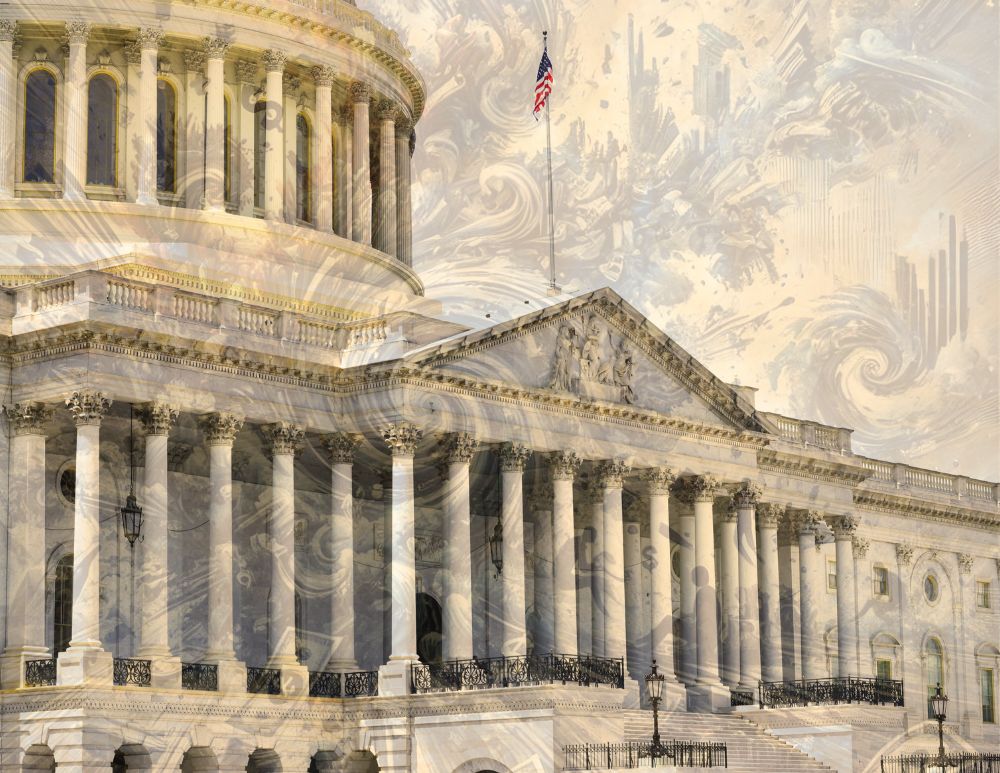Efficient at Being DOGE, Inefficient at Everything Else
The Department of Government Efficiency (DOGE) was created to do exactly what its name suggests—make government operations leaner, smarter, and more cost-effective. From the moment it was announced, the agency positioned itself as a watchdog for waste, cutting unnecessary spending and streamlining bureaucracy. Officials have repeatedly claimed $55 billion in cuts, a figure presented as proof that DOGE is delivering on its promise.
But does the math add up?
A closer look at DOGE’s own documentation raises serious questions. As of now, the agency has only provided clear documentation for $10.48 billion in cuts, leaving a staggering $44.52 billion unaccounted for. Even among the documented reductions, many are not efficiency improvements but shifts in policy priorities, indiscriminate layoffs, and reductions in oversight. In some cases, these cuts have already led to operational disruptions and costly reversals, undermining the very goal of efficiency.
This article examines what DOGE claims, what’s actually documented, and what these cuts mean in practice. Through an analysis of workforce reductions, contractual eliminations, and budget reallocations, we’ll explore whether these actions reflect true efficiency or merely a political reorganization disguised as cost savings.
What we find is that efficiency is not the guiding principle behind DOGE’s cuts. Instead of making government more effective, the agency’s approach has created instability, confusion, and in some cases, outright dysfunction.
If DOGE’s mission is to reduce waste, one question remains: where did the missing $44.52 billion in claimed cuts actually go?
The Numbers: What DOGE Claims vs. What’s Documented
The Department of Government Efficiency (DOGE) claims to have cut $55 billion from federal spending. This figure is frequently cited by the administration, appearing in official statements, media appearances, and throughout DOGE’s website. But despite these claims, the agency has only provided documentation for $10.48 billion in cuts. That leaves $44.52 billion unaccounted for—a substantial gap with little explanation.
What’s Documented: A Breakdown of the $10.48 Billion
Based on DOGE’s own reports, the following cuts have been clearly detailed:
- Contractual Cuts (Including Policy Re-Prioritization): $8.6 billion
- Real Estate Reductions: $0.14 billion
- Workforce Cuts: Estimated at $0.94 billion to $1.88 billion
- Total Documented Cuts: $10.48 billion
These figures come from the DOGE Spending Report (doge.gov/spend) and the DOGE Workforce Report (doge.gov/workforce). While the spending report details certain contract cancellations and real estate divestments, the workforce report does not include a clear total for personnel-related reductions. That figure has been estimated based on external reports and average compensation data from the Office of Personnel Management.
Estimating the Workforce Reductions
DOGE has not provided a total number of federal employees laid off. However, reporting from multiple sources indicates that as of mid-February 2025, approximately 10,000 federal employees have been terminated across various agencies. Some estimates suggest that this number could rise to 20,000 or more in the coming months.
Departments most affected by the workforce reductions include:
- Department of Veterans Affairs: Over 1,000 probationary employees dismissed
- Department of Health and Human Services: Around 5,200 employees laid off, including 1,300 from the Centers for Disease Control and Prevention
- Environmental Protection Agency: 388 employees terminated
- Department of the Interior: Around 2,300 employees dismissed, including 1,000 from the National Park Service and 800 from the Bureau of Land Management
- Department of Agriculture: Approximately 3,400 U.S. Forest Service employees laid off, representing about 10% of its workforce
- Department of Energy: Between 1,200 and 2,000 employees dismissed, including up to 300 from the National Nuclear Security Administration
The estimated cost savings from these layoffs were calculated from the compensation information provided on DOGE’s website of average compensation per government employee at $93,828. Given this, the estimated workforce-related expenditure reduction ranges from $0.94 billion to $1.88 billion.
The $44.52 Billion Gap

If DOGE has indeed cut $55 billion, why is there no documentation for 80% of that figure? Several explanations are possible, including:
- Future Projections vs. Realized Cuts: Some of the numbers may be anticipated rather than actual savings, making them unverifiable at this stage.
- Program Eliminations Without Clear Accounting: Entire programs and agencies have been reduced or removed, but DOGE has not itemized these as individual cuts.
The Transparency Problem
If DOGE’s mission is to improve efficiency, the lack of clear, itemized reporting undermines that claim. Without detailed documentation, it is impossible to determine whether these cuts represent true efficiency gains, political re-prioritization, or outright mismanagement.
A government agency dedicated to reducing waste should be able to account for every dollar it cuts. Instead, nearly $44.52 billion in claimed cuts remain undocumented, with no clear explanation.
Breakdown of Documented Cuts
DOGE has provided documentation for $10.48 billion in cuts. While this represents a significant amount, it is only a fraction of the $55 billion the agency claims to have eliminated. The documented reductions fall into a few primary categories, but the details remain vague, with little explanation of how these cuts improve efficiency rather than simply reducing government functions.
The Major Categories of Documented Cuts
Based on DOGE’s own reports, the breakdown of documented reductions is as follows:
- Contractual Cuts (Including Policy Re-Prioritization): $8.6 billion
- Real Estate Divestments: $0.14 billion
- Workforce Reductions: Estimated between $0.94 billion and $1.88 billion
- Other Reductions: $0.9 billion
- Purchases & Equipment: $1.0 billion
- Subscriptions (Media and Data): $0.46 billion

Some of these figures represent clear cost reductions. Others appear to be the result of shifting priorities rather than eliminating waste.
Policy Re-Prioritization as a Subset of Contractual Cuts
A large portion of the $8.6 billion in contractual cuts comes from policy-driven decisions rather than process-driven efficiency improvements. These include:
- Canceling agreements with nonprofit organizations that provided housing and legal assistance to migrants.
- Ending climate research partnerships with universities.
- Reducing contracts with diversity, equity, and inclusion training providers across federal agencies.
Rather than targeting inefficiencies in spending, these cuts reflect shifts in political priorities. The money was not necessarily being wasted—it was simply being spent on initiatives the current administration does not support, and changes from administration to administration are to be expected.
Workforce Reductions: Lacking Strategic Focus
Layoffs account for an estimated $0.94 billion to $1.88 billion in reductions, affecting at least 10,000 federal employees. These layoffs have impacted a broad range of departments, including the National Park Service, Centers for Disease Control and Prevention, Environmental Protection Agency, and U.S. Forest Service.
The lack of clear prioritization in these reductions raises concerns about their long-term impact. Many of the positions eliminated were probationary employees—workers still in their first year or two of service—rather than an evaluation-based reduction of unnecessary roles. Additionally, several agencies have already reversed some of these cuts after recognizing the harm they would cause.
Real Estate Cuts: Small, But Measurable
DOGE reports $0.14 billion in savings from real estate reductions, largely from terminating leases, selling off federally owned buildings, and consolidating office space. While these cuts appear to be genuine cost-saving measures, the total impact is relatively small compared to the broader claims of efficiency improvements.
Other Reductions, Equipment, and Subscriptions
The remaining $2.36 billion in cuts falls under ambiguous categories, with little explanation from DOGE.
- Purchases & Equipment: Includes reductions in IT contracts, office furniture, and fleet vehicle replacements.
- Subscriptions (Media and Data): Involves eliminating government subscriptions to certain industry databases, research publications, and digital media services.
Without more details, it’s unclear whether these reductions eliminate genuine waste or simply degrade the government’s ability to function effectively.
What These Cuts Tell Us
The cuts DOGE has documented are not insignificant, but they also do not add up to the sweeping efficiency overhaul the agency claims to have delivered. Many reductions appear to be policy-driven rather than efficiency-driven, with an emphasis on eliminating programs and shifting priorities rather than optimizing operations.
If these were carefully planned efficiency improvements, one would expect to see strategic reductions based on cost-benefit analysis, performance reviews, or process streamlining. Instead, the available documentation suggests that most of these cuts were made opportunistically, without a clear framework for improving government performance. You can access these tables , as copied from the DOGE website on February 19, 2025: Contracts, Real Estate.
Workforce Cuts: A Case Study in Mismanagement
DOGE’s workforce reductions were among the most widely publicized cuts, framed as a move to eliminate government bloat. Yet, the way these layoffs were handled raises serious concerns. The process lacked strategic oversight, ignored efficiency principles, and in some cases, actively harmed government operations.
The Numbers: Estimating the Impact
DOGE has not provided a comprehensive total for workforce reductions. However, based on external reporting, an estimated at least 10,000 federal employees (with projections up to 25,000) have been laid off across multiple agencies. The estimated cost reduction from these layoffs falls between $0.94 billion and $1.88 billion, calculated using the average federal employee compensation figures published by the Office of Personnel Management and reiterated at https://doge.gov/workforce .
The layoffs primarily targeted probationary employees, individuals in their first two years of service. While this made it easier to conduct mass firings without lengthy appeal processes, it also meant cuts were not based on performance, necessity, or return on investment. Instead, they followed a broad, indiscriminate pattern, eliminating workers across multiple agencies regardless of their specific contributions.
Where Were the Cuts Made?
Among the agencies impacted:
- Department of Veterans Affairs: Over 1,000 probationary employees dismissed.
- Department of Health and Human Services: Around 5,200 layoffs, including 1,300 from the Centers for Disease Control and Prevention.
- Environmental Protection Agency: 388 employees cut.
- Department of the Interior: Roughly 2,300 dismissed, including 1,000 from the National Park Service.
- Department of Agriculture: 3,400 U.S. Forest Service employees laid off, representing about 10% of its workforce.
- Department of Energy: Between 1,200 and 2,000 dismissals, including up to 300 from the National Nuclear Security Administration.
Many of these agencies provide essential services. While some staff reductions could be justified by changing priorities, the execution of these cuts suggests a lack of careful evaluation.
Layoffs Reversed After Operational Disruptions
Within weeks, agencies began reversing some of these firings after realizing they had cut essential personnel in public health, nuclear security, and other critical areas.
- USDA’s bird flu response team was mistakenly eliminated. Days later, the agency scrambled to rehire them as the virus spread through livestock populations.
- The National Nuclear Security Administration (NNSA) laid off employees working on nuclear warhead maintenance. After backlash, the administration reinstated most of them but struggled to notify affected employees.
- The Indian Health Service (IHS) reversed 950 layoffs after pressure from lawmakers, who warned the move would cripple healthcare services for Indigenous communities.
- NASA’s anticipated 1,000 layoffs were canceled at the last minute following public outcry and concerns over ongoing missions.
Rehiring employees comes at a cost, adding disruption and inefficiency rather than improving operations. Agencies that had already lost critical personnel had to retrain or scramble to restore lost capacity, all while dealing with the uncertainty these cuts created.
Efficiency Requires Strategy—These Layoffs Had None
If the goal was to make government leaner and more efficient, one would expect a targeted approach—analyzing costs, performance, quantifying ROI on spend, and redundancy before deciding which positions to cut. Instead, DOGE’s workforce reductions appear rushed, driven more by political motives than operational efficiency.
The result?
- Unnecessary rehiring efforts.
- Disruptions to critical services.
- Anxiety and instability within federal agencies.
Rather than making government work better, these cuts created chaos and inefficiencies that are in process of being undone.
Eliminating Oversight: The Cost of Removing Accountability
One of the most troubling aspects of Trump’s initial cuts is the removal of independent inspectors general (IGs), ethics officers, and other oversight personnel—the very people responsible for preventing fraud, waste, and abuse in government spending. While presented as a way to streamline operations, these cuts weaken accountability and increase the risk of corruption.
The Role of Inspectors General
Inspectors general serve as internal watchdogs within federal agencies. Their responsibilities include:
- Investigating fraud, waste, and abuse.
- Conducting audits to ensure federal funds are used appropriately.
- Identifying inefficiencies and recommending process improvements.
The modern IG system was established in response to Watergate-era corruption, ensuring government officials are held accountable regardless of political affiliation. These positions are not meant to serve partisan interests, and IGs often work under multiple administrations.
The Mass Firing of Inspectors General
In January 2025, the Trump administration abruptly fired at least 17 inspectors general, with no advance notice to Congress, violating a federal requirement that such dismissals come with a 30-day warning and detailed explanation. Among those removed were IGs overseeing:
- The Department of Defense
- The Department of Agriculture
- The Department of Education
- The Department of Commerce
The administration defended the move as a necessary shake-up, arguing that these watchdogs were part of an entrenched bureaucracy resistant to reform. Critics, however, viewed it as a deliberate attempt to weaken oversight, removing officials who might challenge DOGE’s cost-cutting decisions.
Undermining Government Integrity
Without IGs in place, agencies lose a key mechanism for identifying financial mismanagement. This lack of oversight raises several concerns:
- Increased fraud risk: With fewer independent audits, opportunities for corruption expand.
- Lack of transparency: Spending decisions become harder to track, leaving the public with less information on how taxpayer dollars are used.
- Weakened institutional controls: Agencies may proceed with policy-driven spending shifts without the checks and balances that IGs provide.
Even some Republican lawmakers expressed unease. Senator Chuck Grassley, a longtime advocate for government oversight, criticized the administration for failing to follow legal procedures, stating, “There may be good reasons for these firings, but we need to know what they are.”
A Pattern of Undermining Oversight
The mass firings are not an isolated incident. DOGE’s broader cuts have included:
- Eliminating ethics personnel in key agencies, reducing internal controls on conflicts of interest.
- Scaling back reporting requirements for contractors, making it harder to track spending.
- Weakening enforcement mechanisms in federal procurement, increasing the risk of misallocated funds.
These changes suggest a pattern: removing oversight is not about efficiency—it’s about reducing scrutiny.
Efficiency or Political Protection?
True efficiency means ensuring government funds are spent wisely and effectively. Cutting oversight personnel does the opposite, creating an environment where mismanagement can flourish unchecked.
Rather than improving the function of government, these cuts make it easier for waste, fraud, and abuse to go unnoticed. A system without accountability is not efficient—it is vulnerable.
Policy Re-Prioritization vs. Efficiency: What DOGE Is Really Doing
DOGE’s cuts have been marketed as efficiency-driven cost reductions, but a closer look reveals that many are simply shifts in policy priorities. The agency has not focused on optimizing government performance or ensuring the best return on taxpayer dollars. Instead, it has reallocated resources, eliminated programs, and reduced services based on political objectives rather than operational effectiveness.
Cuts That Reflect Policy Choices, Not Waste Reduction
A significant portion of the cuts documented by DOGE are not about eliminating inefficiencies but rather defunding programs that do not align with the administration’s priorities. Some of the most notable include:
- Terminating contracts with nonprofit organizations that provide legal assistance and housing for migrants.
- Canceling climate research programs and ending partnerships with universities conducting environmental studies.
- Defunding federal diversity, equity, and inclusion (DEI) initiatives, including contracts for DEI training in multiple agencies.
- Reducing funding for arts, culture, and public broadcasting, including grants that previously supported local radio and television stations in rural areas.
None of these cuts improve efficiency. They simply reflect a shift in spending priorities, often toward areas the administration favors, while reducing support for others.
Spending Cuts in One Area, Increased Spending in Another
At the same time that DOGE touts its budget reductions, the administration is actively seeking major spending increases elsewhere. One of the most notable examples is immigration enforcement.
- Trump’s administration is requesting an additional $175 billion for ICE, detention beds, and deportation resources (NBC News).
- Funds are being reallocated from agencies like USAID (which saw its workforce slashed by over 90%) to expand border security operations.
- Federal law enforcement funding has increased in key areas, even as civilian oversight offices have been scaled back.
This pattern reveals that the cuts DOGE promotes as “efficiency measures” are actually funding shifts rather than reductions in total government spending.
What True Efficiency Would Look Like
If DOGE were genuinely focused on efficiency, its approach would look different. Instead of across-the-board eliminations and political re-prioritization, an efficiency-driven model would:
- Evaluate program effectiveness before making cuts, rather than eliminating entire categories of spending.
- Streamline processes within agencies to reduce bureaucratic redundancies.
- Use data-driven analysis to determine which roles and programs provide the best return on investment.
That’s not what is happening. Instead, DOGE’s cuts reflect an ideological reshaping of government priorities, not a methodical effort to improve performance.
The Narrative vs. Reality
DOGE presents itself as an agency committed to reducing waste, but the actual cuts tell a different story. This is not about making government work better; it’s about removing funding from certain programs and directing it toward others. Efficiency isn’t the goal—policy transformation is.
The result? The federal government is not necessarily smaller, just different. And in many cases, likely both less effective and less efficient – time will tell.
Conclusion: DOGE’s Efficiency Is a Myth
DOGE claims to have saved $55 billion, but only $10.48 billion in cuts have been documented. The rest remains unexplained. Workforce reductions, contract cancellations, and program eliminations were rolled out rapidly, but without clear strategy or analysis. The result? More inefficiency, not less.
What We Know About the Cuts
- $44.52 billion in claimed cuts remain undocumented.
- Workforce reductions were arbitrary, leading to costly rehiring efforts.
- Critical oversight roles were eliminated, weakening accountability.
- Cuts primarily reflect political re-prioritization, not efficiency-driven optimization.
- Some areas of government were reduced while others, like immigration enforcement, are seeking massive budget increases.
Rather than refining operations and improving effectiveness, DOGE’s approach has created disruptions, fueled instability, and in some cases, forced agencies to reverse course to prevent operational failures. The mass firings of inspectors general and oversight personnel only add to concerns about transparency and accountability.
Efficiency vs. Policy Shifts
True efficiency means:
- Eliminating redundancy while preserving critical functions.
- Reducing waste through process improvement, not across-the-board cuts.
- Ensuring oversight mechanisms remain intact to prevent fraud and abuse.
DOGE has not done this. Instead, its approach suggests that efficiency is merely a talking point used to justify broad, politically motivated changes.
The Bottom Line
A government truly committed to efficiency would provide clear documentation of its decisions, justify its cuts with measurable improvements, and ensure essential services continue without disruption. DOGE has done none of these things. The numbers don’t add up, and neither does the logic.
If there is an explanation, it isn’t being made clear—at least, not at this snapshot in time.
Sources Include
- https://doge.gov/spend
- https://doge.gov/workforce
- https://www.allsides.com/blog/tracking-trumps-cuts-federal-agencies-and-funding
- https://www.forbes.com/sites/mollybohannon/2025/02/19/trump-administration-reverses-layoffs-at-these-federal-agencies-after-accidentally-cutting-bird-flu-nuclear-staff
- https://www.npr.org/2025/02/19/nx-s1-5302019/bird-flu-usda-firings-reversed
- https://apnews.com/article/nuclear-doge-firings-trump-federal-916e6819104f04f44c345b7dde4904d5
- https://www.military.com/daily-news/2025/02/14/1000-va-employees-lose-jobs-federal-worker-purge.html
- https://apnews.com/article/trump-inspectors-general-fired-congress-unlawful-4e8bc57e132c3f9a7f1c2a3754359993
- https://www.nbcnews.com/politics/congress/trump-border-czar-money-immigration-crackdown-graham-rcna191747
- https://federalnewsnetwork.com/pay/2025/01/after-2-federal-pay-raise-for-2025-pay-compression-spreads-a-little-further/
- https://www.theguardian.com/us-news/2025/feb/13/elon-musk-doge-delete-agencies
- https://www.reuters.com/world/us/thousands-fired-trump-musk-take-ax-us-government-offices-2025-02-14/







